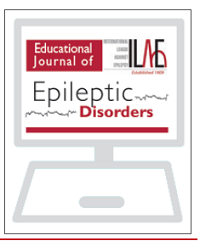
OBJECTIVES:
To compare the antidepressant-like response induced by cannabidiol in adolescent and adult rats and the possible parallel modulation of hippocampal neurogenesis.
RESULTS:
Cannabidiol induced differential effects depending on the age and dose administered, with a decreased sensitivity observed in adolescent rats: (1) cannabidiol (30 mg/kg) decreased body weight only in adult rats; (2) cannabidiol ameliorated behavioral despair in adolescent and adult rats, but with a different dose sensitivity (10 vs. 30 mg/kg), and with a different extent (2 vs. 21 days post-treatment); (3) cannabidiol did not modulate anxiety-like behavior at any dose tested in adolescent or adult rats; and (4) cannabidiol increased sucrose intake in adult rats.
CONCLUSIONS:
Our findings support the notion that cannabidiol exerts antidepressant- and anorexigenic-like effects in adult rats and demonstrate a decreased potential when administered in adolescent rats. Moreover, since cannabidiol did not modulate hippocampal neurogenesis (cell proliferation and early neuronal survival) in adolescent or adult rats, the results revealed potential antidepressant-like effects induced by cannabidiol without the need of regulating hippocampal neurogenesis.”
https://www.ncbi.nlm.nih.gov/pubmed/32086540
https://link.springer.com/article/10.1007%2Fs00213-020-05481-4


 “The number of patients using
“The number of patients using  “Cardiovascular complications are the major cause of mortality in diabetic patients. However, the molecular mechanisms underlying diabetes-associated arrhythmias are unclear.
“Cardiovascular complications are the major cause of mortality in diabetic patients. However, the molecular mechanisms underlying diabetes-associated arrhythmias are unclear. “The most recent studies published or initiated in the last 18 months, investigating cannabidiol in the treatment of symptoms of schizophrenia and related conditions are summarized, including observed tolerability and reported side-effects.
“The most recent studies published or initiated in the last 18 months, investigating cannabidiol in the treatment of symptoms of schizophrenia and related conditions are summarized, including observed tolerability and reported side-effects. “To determine whether differences in disability status, spasticity severity, and spasticity duration at treatment start in patients with resistant multiple sclerosis (MS) spasticity might influence response to add-on tetrahydrocannabinol:
“To determine whether differences in disability status, spasticity severity, and spasticity duration at treatment start in patients with resistant multiple sclerosis (MS) spasticity might influence response to add-on tetrahydrocannabinol: “The cellular microenvironment plays a critical role in the maintenance of bone marrow-derived mesenchymal stem cells (BM-MSCs) and their subsequent cell lineage differentiation. Recent studies suggested that individuals with adipocyte-related metabolic disorders have altered function and adipogenic potential of adipose stem cell subpopulations, primarily BM-MSCs, increasing the risk of heart attack, stroke or diabetes.
“The cellular microenvironment plays a critical role in the maintenance of bone marrow-derived mesenchymal stem cells (BM-MSCs) and their subsequent cell lineage differentiation. Recent studies suggested that individuals with adipocyte-related metabolic disorders have altered function and adipogenic potential of adipose stem cell subpopulations, primarily BM-MSCs, increasing the risk of heart attack, stroke or diabetes.

 “Radiotherapy combined with chemotherapy is the major treatment modality for human glioblastoma multiforme (GBM). GBMs eventually relapse after treatment and the average survival of GBM patients is less than two years.
“Radiotherapy combined with chemotherapy is the major treatment modality for human glioblastoma multiforme (GBM). GBMs eventually relapse after treatment and the average survival of GBM patients is less than two years. “Highly purified
“Highly purified